Swimlane Modeling (Quam 5.3)
Quam also offers the possibility to model processes in Swimlanes. If you want to model swimlanes, please proceed as follows:
Open the process element in Visio, as described in chapter Graphical Modeling of Process Groups and Processes (Quam 5.3) and click on the QUAM (1) tab on the |Model Browser button (2) to load an overview of the entire process model below the drawing sheet.
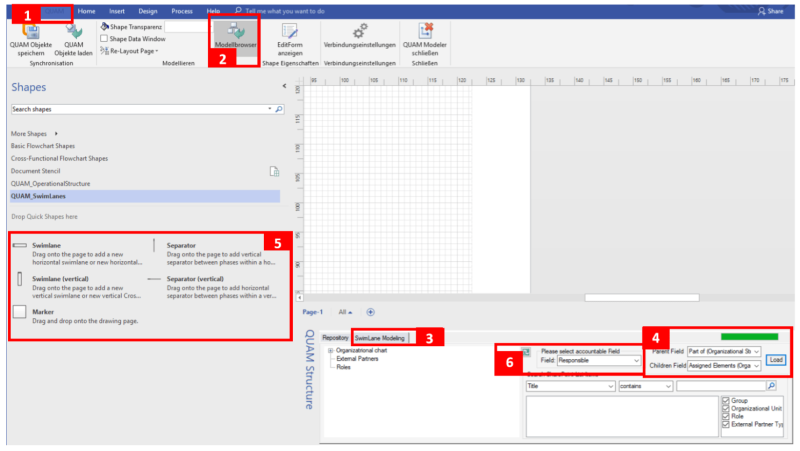
Open the |SwimLane Modeling tab (3) and select the Component of column from the drop-down menus (4) in the "Parent Field" and the Assigned to column in the "Children Field" and confirm your selection by clicking the |Load button.
In the tree view on the left side the QUAM Swimlane Shapes are now displayed and can be used for modeling (5). Before you start, select in the "Accountable Field" (6) whether the swimlanes are responsible, accountable, consulted or informed roles or organizational units, etc. You can make this setting individually for each swimlane.
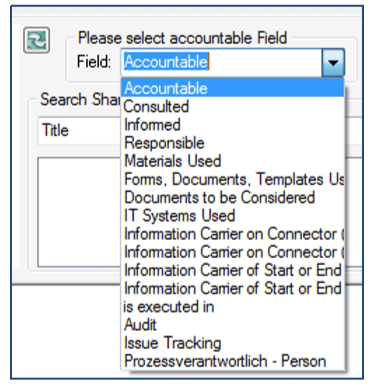
Drag & drop a horizontal or vertical swimlane shape onto the drawing area as required and enter the name of the process under Title. Select an organizational unit or role on the lower tab page "Swimlane Modeling" and drag & drop it onto the head (function) of the swimlane. The swimlane now adopts the name of the element.
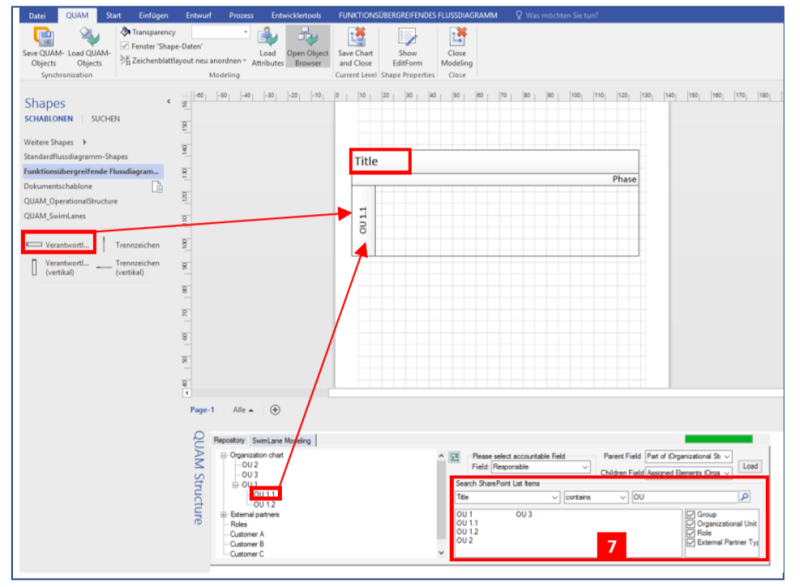
If required, you can also use the search and filter function (Search SharePoint List Items) (7). Browse the columns by desired attributes and filter the results by content type. Once you have found the desired item, drag & drop it onto the swimlane header. The name can be found in the swimlane on the right.
Add more swimlanes by dragging the swimlane shape onto the drawing area and releasing it as soon as an orange seam appears. Then the new swimlane attaches itself to the existing swimlane along the orange seam and you can continue with the assignment of a function as described above.
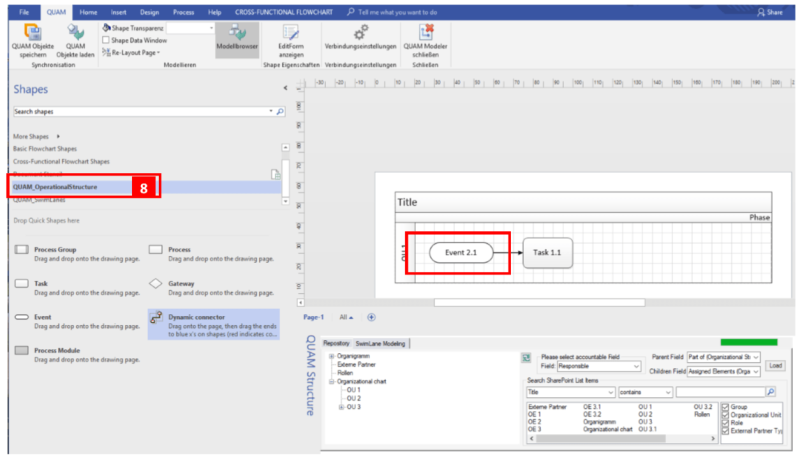
To model your process, proceed as described in chapter Graphical Modeling of Process Groups and Processes (Quam 5.3) and drag the shapes from the QUAM OperationalStructure template (8) into the corresponding swimlane. The function of the swimlane is automatically stored on the element. In this example, the responsibility (because accountable Field: Decision) of the "Task 2.1" arranged in the swimlane "OU 1.1"" lies with the organizational unit OU 1.1.
To bring an existing process into swimlane form, proceed as described and simply drag the existing shapes into the newly created swimlanes.
Complete the process, save the input by clicking |QUAM Save objects and close the workspace with |QUAM Close Modeler. Back in the browser, update the process by clicking |Reload Site to display the new drawing.
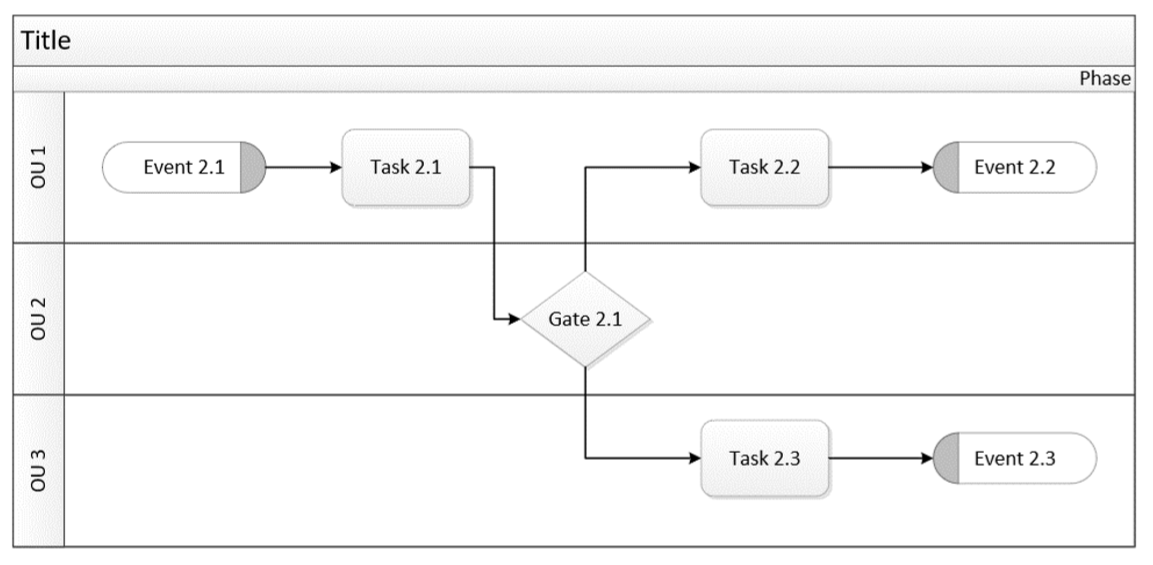
Important Notes on Swimlane Modeling
Before Swimlane modeling can be used, it must be configured in the Quam by an appropriately trained user.
Quam currently has no representation for pools (swimlanes represent responsibilities such as organizational units, jobs or IT systems). A pool can be further diversified or substructured by swimlanes) and different connector types. This means that a pool can be created graphically by Visio in a BPMN diagram, but is not saved as a SharePoint element in Quam. The connector types "Sequence Flow", "Message Flow" and "Association" can be graphically generated by Visio in the BPMN diagram, but are each stored in Quam as a uniform connector.
If such a drawing is deleted later, the content can only be partially restored by the |QUAM Load Objects function: Pools are not created, activities cannot be automatically arranged in the corresponding lanes (the shapes must be rearranged manually in this case), the connectors are restored to the uniform type "Sequence Flow".
